The propagation of olive trees by grafting and by cutting
VIVAI
PIETRO PACINI
The propagation of olive trees by grafting and by cutting
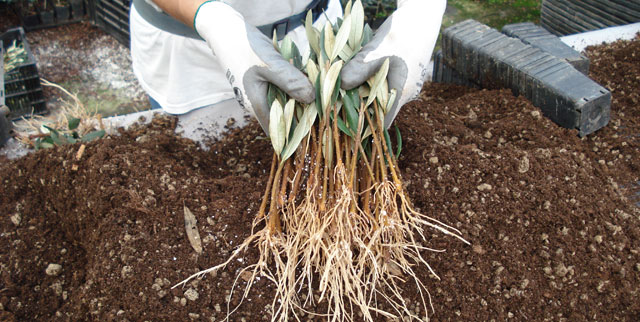
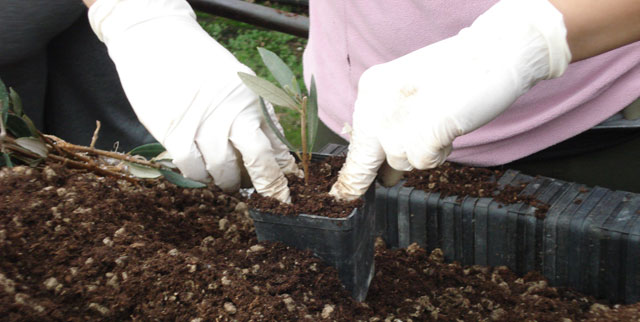
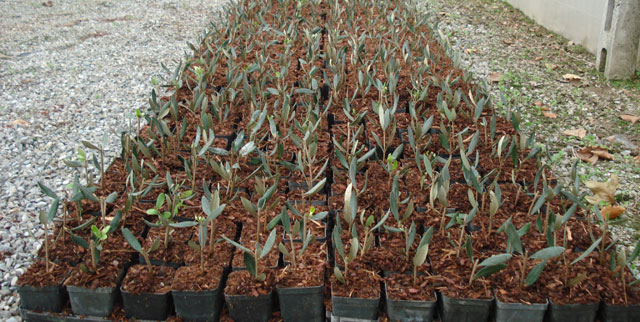
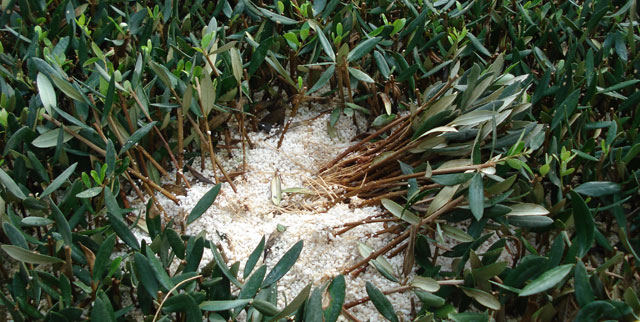
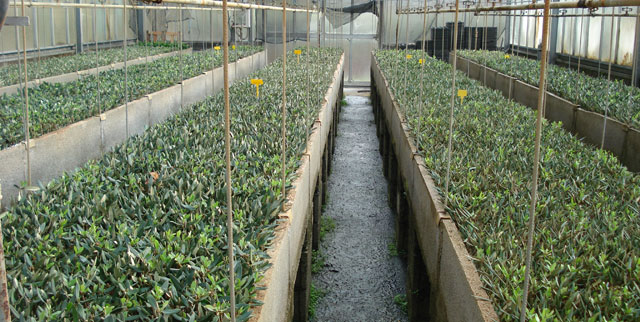
The propagation of olive trees by grafting
This propagation method is a traditional nursery technique that starts from the little plant that develops from the olive stone properly treated and put in specific seedbeds at the end of summer. At the end of September/beginning of October, the stones start to germinate until the end of December, when they complete their development.
During the spring the little plants are transferred from the seeding containers into the ground that has been specifically treated for this purpose, or they are put in pots. After the transplantation, the little plants are closely followed to obtain an adequate development the following spring and be able to graft them.
At this point the real grafting starts. Here both the suitability of the plant and the quality of the vegetal matter for the propagation are important.
For this reason it is important to take little one-year-old branches (scion) with a suitable consistency.
The wild plants are cut at about 5 cm of height from the ground and the little scion is inserted with the most contact surface as possible. After this, the grafting parts are sealed with wax. After a few days the sprouts of the scion start to germinate and grow to give life to the new plant of the chosen variety. After this, the plants are followed and grown until the following autumn, when they will have reached the right development that allows us to put them in plastic pots with an adequate substratum.
The propagation of olive trees by cutting
This method is more recent than grafting, and it is widespread in all nursery sectors. To do the cutting, we need to take one-year-old propagation vegetal matter from selected "mother" plants, in order to get the same variety. The matter taken is adequately cut in parts called "scions", that is made by branches with 4 to 5 knots. At the base of the scion we make a horizontal cut right under the knot, whereas the 2 upper knots are defoliated, and the two knots above are left as they are (with the leaves). At this point the scion is immersed into a hydro alcoholic solution that contains rooting hormones.
The treated scions are put in a specific sterile substratum, usually Agriperlite, and in a protected and warmed up environment with the right humidity conditions obtained by often atomizing water (mist propagation) onto the leaves. Usually, after 70-90 days the rooted scions will have developed a sufficient root apparatus that will allow the future growth of the plant. Only the most developed plants are then selected and put in pots with a layer of peat and pumice.
Unfortunately, this kind of propagation is limited by the fact that not all cultivars take root in the same way, and some cultivars, even though they are stimulated, don't develop roots or they develop very small and insufficient roots.
